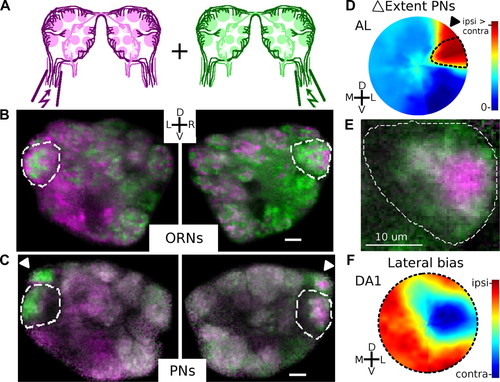
Specializations of a pheromonal glomerulus in the Drosophila olfactory system
Abstract
Insect pheromonal glomeruli are thought to track the fine spatiotemporal features of one or a few odorants to aid conspecific localization. However, it is not clear whether they function differently from generalist glomeruli, which respond to many odorants. In this study, we test how DA1, a model pheromonal glomerulus in the fruit fly, represents the spatial and temporal properties of its input, compared with other glomeruli. We combine calcium imaging and electrical stimulation in an isolated brain preparation for a simultaneous, unbiased comparison of the functional organization of many glomeruli. In contrast to what is found in other glomeruli, we find that ipsilateral and contralateral stimuli elicit distinct spatial patterns of activity within DA1. DA1’s output shows a greater preference for ipsilateral stimuli in males than in females. DA1 experiences greater and more rapid inhibition than other glomeruli, allowing it to report slight interantennal delays in stimulus onset in a “winner-take-all” manner. DA1’s ability to encode spatiotemporal input features distinguishes it from other glomeruli in the fruit fly antennal lobe but relates it to pheromonal glomeruli in other insect species. We propose that DA1 is specialized to help the fly localize and orient with respect to pheromone sources.